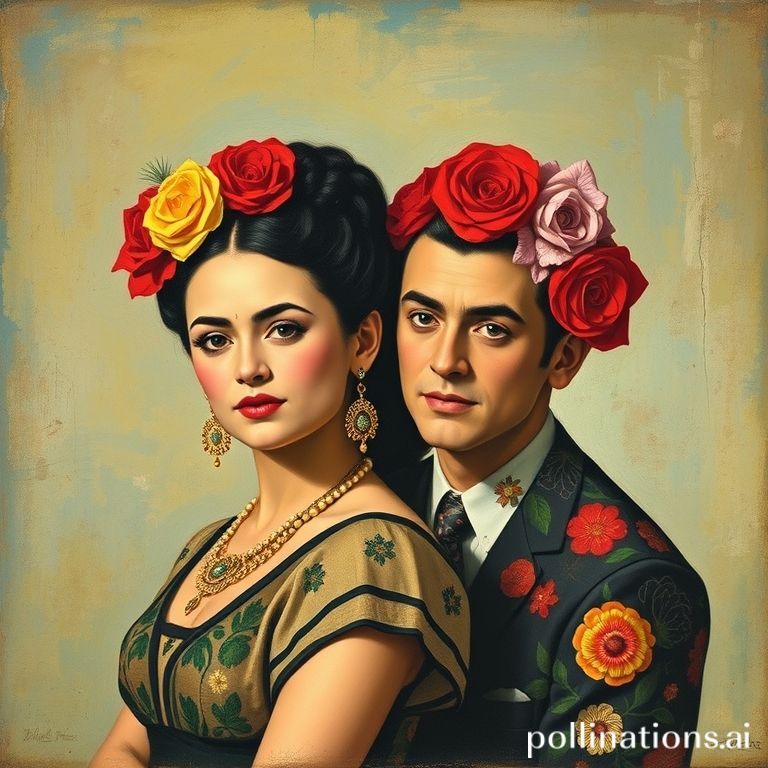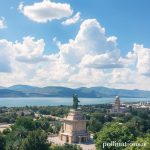Frida Kahlo and Diego Rivera, two names inextricably linked to the vibrant art scene of Mexico, remain iconic figures whose lives and works continue to captivate audiences worldwide. Their passionate, tumultuous relationship, intertwined with their shared commitment to Mexicanidad (Mexican identity), produced a legacy that transcends art, touching upon politics, love, and the very essence of human experience. Understanding their individual genius and their complex partnership offers a profound glimpse into the soul of Mexico itself.
This article explores the lives and artistic contributions of Frida Kahlo and Diego Rivera, highlighting their unique styles, their shared inspirations, and the enduring impact they have had on Mexican and international art. From Frida’s intensely personal and symbolic self-portraits to Diego’s monumental and politically charged murals, we delve into the elements that make them not just artists, but cultural icons.
Frida Kahlo: Painting Pain and Passion
Frida Kahlo (1907-1954) was a Mexican painter best known for her self-portraits. Her work is characterized by its raw emotional honesty, vibrant colors, and incorporation of indigenous Mexican culture. A life marked by physical suffering, stemming from a childhood bout with polio and a devastating bus accident in her youth, profoundly shaped her artistic vision. Frida transformed her pain into art, creating powerful and symbolic depictions of her physical and emotional states.
Key Characteristics of Frida’s Art
- Self-Portraits: Dominate her oeuvre, exploring themes of identity, the human body, and suffering.
- Symbolism: Rich in Mexican folklore and pre-Columbian imagery, reflecting her connection to her heritage.
- Emotional Intensity: Unflinching honesty in portraying her physical and emotional pain.
- Vibrant Colors: Inspired by Mexican folk art, creating visually arresting and emotionally charged compositions.
Frida’s art wasn’t just a reflection of her personal experiences; it was also a powerful statement about female identity and resilience. She challenged conventional notions of beauty and femininity, portraying herself with unflinching honesty, complete with her iconic unibrow and mustache, becoming a symbol of strength and defiance.
Diego Rivera: The Muralist of the Mexican Revolution
Diego Rivera (1886-1957) was a prominent Mexican muralist whose large-scale frescoes played a significant role in the Mexican Muralism movement. His art served as a powerful tool for social and political commentary, depicting scenes from Mexican history and celebrating the lives of ordinary people. A staunch communist, Rivera used his art to promote his political ideals and to advocate for social justice.
The Power of Public Art
Rivera believed that art should be accessible to everyone and that it had a responsibility to educate and inspire the masses. His murals, often painted on public buildings, told stories of Mexico’s past, present, and future, celebrating the indigenous heritage, the struggles of the working class, and the ideals of the Mexican Revolution. His work aimed to create a sense of national identity and pride.
- Monumental Scale: His murals are vast in size, commanding attention and conveying a sense of grandeur.
- Historical Narratives: Depicting key events and figures from Mexican history.
- Social Commentary: Addressing issues of class, inequality, and political oppression.
- Influence of Indigenous Art: Incorporating elements of pre-Columbian art and culture.
A Passionate and Tumultuous Relationship
The relationship between Frida Kahlo and Diego Rivera was as legendary as their art. They married in 1929, a union often described as a “marriage between an elephant and a dove,” reflecting the stark differences in their physical appearances and personalities. Their relationship was marked by both deep love and intense conflict, including affairs, separations, and eventual remarriage.
Despite the turmoil, their bond remained unbreakable. They were each other’s greatest supporters and critics, pushing each other to grow as artists. Their shared passion for Mexico, their commitment to social justice, and their mutual admiration for each other’s talent kept them connected, even through the most challenging times.
Enduring Legacy
Frida Kahlo and Diego Rivera left an indelible mark on the art world and on Mexican culture. Their art continues to inspire artists, activists, and anyone who appreciates the power of art to reflect the human experience. Frida’s intensely personal and symbolic self-portraits have made her a feminist icon, while Diego’s monumental murals have become powerful symbols of Mexican national identity. Together, they represent the vibrant spirit and artistic genius of Mexico.
Conclusion
The story of Frida Kahlo and Diego Rivera is a testament to the power of art, love, and the enduring spirit of Mexico. Their individual artistic achievements, coupled with their complex and passionate relationship, have cemented their place as two of the most important and influential artists of the 20th century. They remain not only art icons, but also powerful symbols of Mexican identity, resilience, and creativity, their legacy continuing to inspire generations.
If you found this exploration of Frida Kahlo and Diego Rivera fascinating, be sure to check out our other articles on Mexican art and culture here on Life in Mexico!
IMAGE: A vibrant and colorful illustration depicting Frida Kahlo and Diego Rivera standing side-by-side against a backdrop of iconic Mexican imagery, including pyramids, flowers (especially marigolds), and traditional patterns. Frida is wearing her signature Tehuana dress and a flower crown, while Diego is holding a painter’s palette. The overall mood is passionate, artistic, and celebratory, with warm lighting and a folk art-inspired style.


